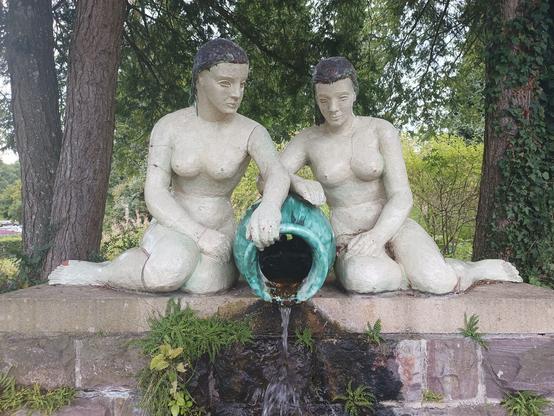In
#Villingen-Schwenningen, more precisely on the outskirts of
#Villingen,
#Germany, there is a beautiful
#spa-garden.
Created in 1935 on the site of a former mill, it is still a popular recreational area today, directly on the Brigach. Concerts, events, performances and, in some cases, wedding ceremonies take place here all year round on the grounds with a small covered stage.
The majolica figures displayed between the hedges and natural stone walls are a real eye-catcher.
The two life-size figures - two kneeling, unclothed women with an amphora from which water flows into a small fountain - probably symbolize the two rivers
#Kirnach and
#Brigach, which unite in the nearby town forest.
There are five other smaller figures along the edge of the park, which depict various motifs and are intended to refer to the typical garden art of the 1930s: between two girls bathing are three boys making music with their instruments.
Iconographically, the two female nudes are intended to represent the tradition of the life reform movements, while the musicians refer to the ideals of the youth music movement.
These figures were created by Erna Kientz-Vogel from the “Fayence-Manufaktur Richard Bampi Kandern”, among others.
Among other things,
#majolica refers to a colorfully painted and tin-glazed type of ceramic production, also known as “faience”.
Originally from the 13th century, this technique made its way from Islamic-dominated Spain to Italy. However, towards the end of the 16th century, these goods, which tended to be made for the luxury sector, lost interest, and inexpensive second-hand goods were in demand.
Towards the end of the 19th century, this technique flourished once again in Europe; even the German Emperor Wilhelm II founded such a workshop in his Polish summer residence in 1904. However, this interest waned over time. Today, there are only a few workshops left.














